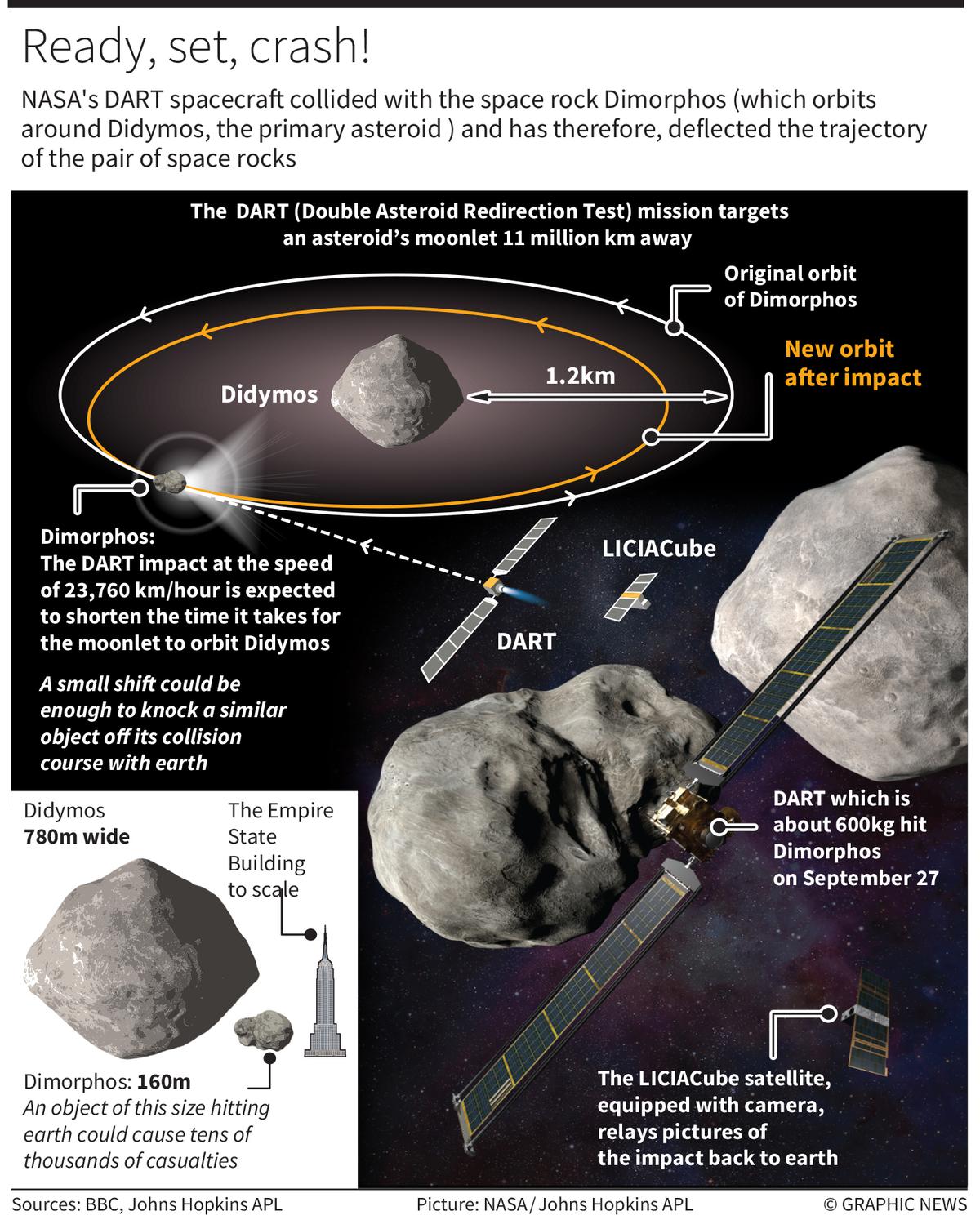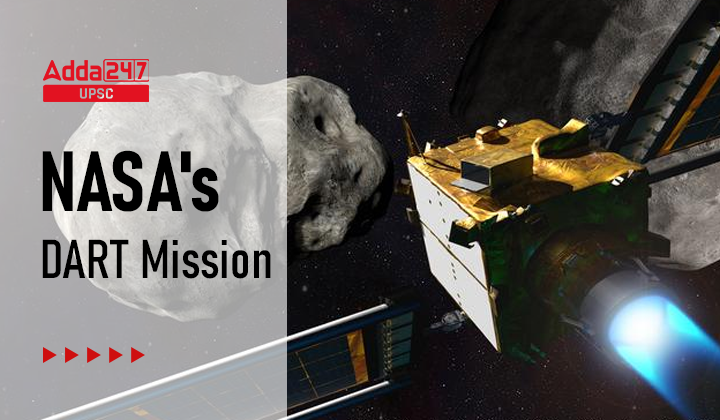Table of Contents
NASA’s DART Mission: Why in news?
NASA has confirmed that the collision of the auto-rickshaw sized 600 kilogram weighing DART, on the football stadium-sized Dimorphos, about five billion kilogram in mass (orbiting around the 780 metres wide primary asteroid Didymos), has deflected the trajectory of the pair of space rocks.
NASA’s DART Mission: Background
On September 27the DART (Double Asteroid Redirection Test) spacecraft collided with the space rock Dimorphos (just 160 metres wide).
NASA’s DART Mission: Introduction
- To avert any future big asteroid collision with earth, NASA had been working to develop the capability to nudge an incoming asteroid to change its course.
- In the last seven years, the American space agency spent millions on the mission, named Double Asteroid Redirection Test, or DART.
- NASA wanted to see if the spacecraft’s impact can change the trajectory of an asteroid.
NASA’s DART Mission: When did a big asteroid hit the earth the last time?
- The last time a big asteroid crossed the path with the earth was about 66-million years ago.
- The impact was so devastating that it wiped out 70% of plants and several species, including the mighty dinosaurs.
- Although chances of an asteroid that big hitting the earth again in near future are bleak, scientists don’t rule it out completely.
- And the likelihood of smaller asteroids coming in earth’s way are much more. They can easily wipe-out a big city or even a state, if not a country.
NASA’s DART Mission: Key Points
- The DART spacecraft was launched in November 2021 by a SpaceX rocket.
- Travelling at a speed of 24,000 km per hour, the 570-kg spacecraft took almost ten months to reach the target, an asteroid named Dimorphos.
- Dimorphous is about 170 meters in diameter and orbits a parent asteroid five times larger called Didymos, which is 10-km long. Both the asteroids don’t pose a threat to earth.
- The NASA vehicle crashed into Dimorphos at a blistering speed of around 4 miles per second.
- Mission control at the Johns Hopkins Applied Physics Laboratory (APL) in Maryland, announced the successful impact.
- DART’s on-board camera livestreamed second-by-second images to the earth till it went blank due to the collision with the asteroid.
NASA’s DART Mission: Which technique did NASA use?
- NASA undertook the ‘kick’ technique.
- Compared to the massive Dimorphos, DART is a tiny Goliath.
- Yet crashing at a breakneck speed of 23,760 kilometres per hour, the momentum is adequate to slash the angular momentum of Dimorphos, making it speed up and move closer to Didymos.
- All of these reduce the orbital period and the time taken for the moonlet to go around the primary asteroid. The pair’s trajectory is thus deflected as the net result of these dynamics.
- Consider it like this: a fast-moving moped slamming into a truck is sure to undergo a massive crash and burn, yet will veer the massive truck a bit. This is the essence of the ‘kick’ technique.

NASA’s DART Mission: What are asteroids?
- Leftover materials from the formation of the sun, earth and planets, through the accretion and agglomeration of giant gas and rocks, are scattered as comets, asteroids and meteoroids in the solar system.
- Some of these cross their path and collide with earth from time to time, resulting in a spectacular meteor shower. Most rocks are so small that they burn up completely in the atmosphere due to frictional heating.
- If they are large enough, the charred piece falls through as a meteorite.
- The falling piece from a meteoroid 140 metres wide or more will be capable of completely wiping out a city.
- The impact would be devastating if it was one or more kilometres wide.



 TSPSC Group 1 Question Paper 2024, Downl...
TSPSC Group 1 Question Paper 2024, Downl...
 TSPSC Group 1 Answer key 2024 Out, Downl...
TSPSC Group 1 Answer key 2024 Out, Downl...
 UPSC Prelims 2024 Question Paper, Downlo...
UPSC Prelims 2024 Question Paper, Downlo...





